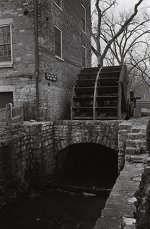Bingley
Veteran
I hope you don't mind if I ask a slightly off-topic question that's been bugging me for a while. Do the users of this hybrid process feel that the results are significantly better or different from the results that could be obtained from a purely digital process? If so, in what way?
I develop my own bw and scan the negs. The short answer to your question, for me, is yes. I like being able to use different film/developer combinations to achieve specific results. Not sure I could obtain the same results in digital. (Is there a digital camera with a "Tri-X in Rodinal" setting?). I'm not saying the results of this hybrid process are "better," but I do think they're different from a purely digital process. And, frankcly, I enjoy developing my own film.
I also think there's a cost factor too, but I haven't used a high-end digital camera so I don't have a solid basis to compare.


